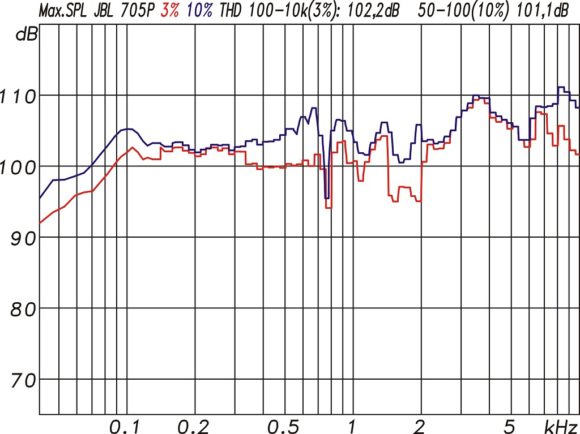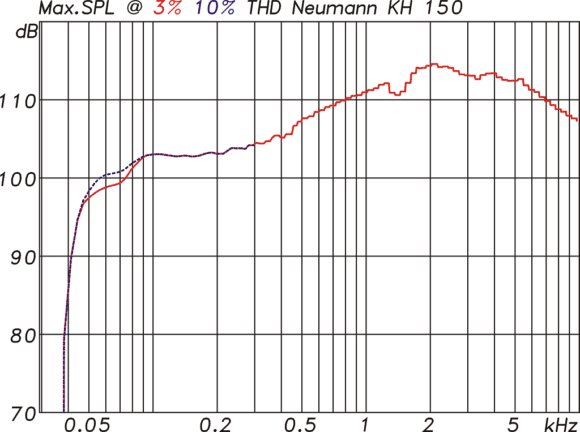Hats off to Neumann. Such superb performance (now validated twice, first by Sound und Recording and now by
@amirm) makes one legitimately wonder
if there is room for improvement on this model in its size/footprint class. Sticking within the assumed design brief, I can only think of one: greater bass output. As it stands, from ~300Hz down is actually matched in headroom by JBL’s teeny tiny (and cheaper I think) 705p. That JBL 5” woofer is ridiculously potent. But they also need to leave enough on the table to make a KH 150 II in a dozen years or so.
 705P
705P
New
Neumann KH 150
Also I guess the addition of “prosumer” features such as Wi-Fi and AirPlay 2 would be nice for us, though out of scope for their target market. Hopefully Neumann's improved the standby circuit compared to the super flaky one on KH 80, so that’s not a thing any more.
Aside from those, it’s hard to see any “improvements” that aren’t really “design changes,” such as a wider-dispersion waveguide and maybe tweeter changes to accommodate the lower crossover point required for wider coverage with no dispersion disruption. But that's again a different speaker.
But we are hearing the sum of on-axis and reflections from off-axis.
That's why Estimated In-Room Response comes in instead of on-axis only.
Are we? Go back to
@Sean Olive's curve drawing study, which found trained listeners’ impressions of a loudspeaker’s spectral balance tracked the on axis/LW.
IMO PIR is a wildly overrated metric, and speakers with horiztonal dispersion disruptions that voice the listening axis response to improve PIR are…not my personal preference.
No. KH150 has unbalanced directivity. DI steps up to low treble due to dimensions and shape of the wave guide. It should be listened close to on-axis. KH150 is a "monitor" so all that could be irrelevant for many others (but not for me).
Are you saying you think it’s sonically worse to go from wide to narrow at lower frequencies than to have a dispersion disruption at the mid tweeter cross?
Personally I don’t recall a case when I’ve found the latter acceptable, but the former seems pretty benign in use.



